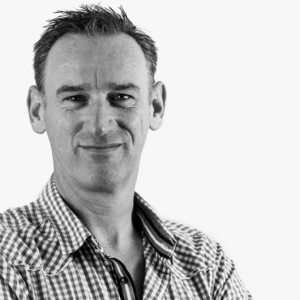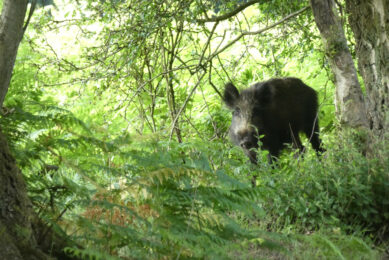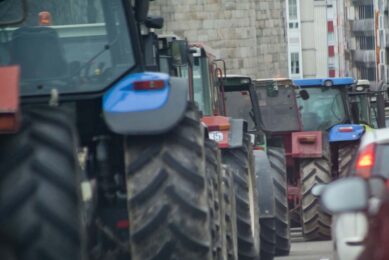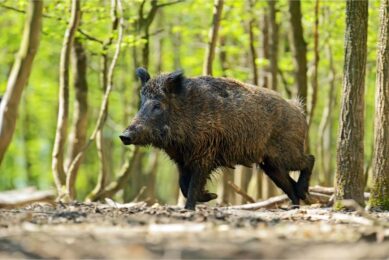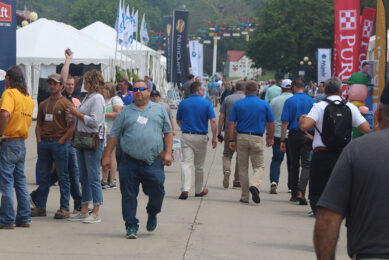Innovative pig house comes with hiccups
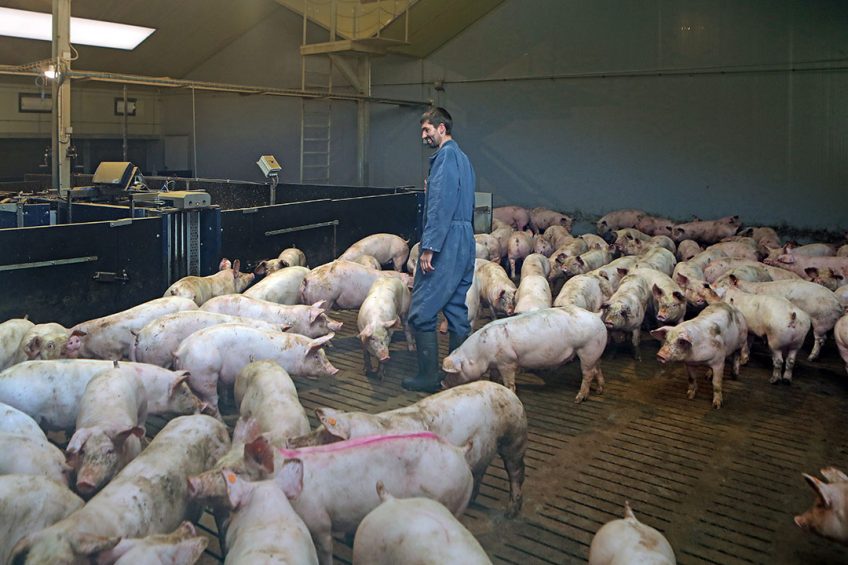
The new finisher pig house belonging to Belgian producer Bart Vanackere has a range of innovations, including a lot of space for the animals, advanced manure separation and vegetable treatment from which the farm can prepare its own liquid feed rations. He is happy, but there’s still room for improvement.
The finisher pig house on Bart and Mieke Vanackere’s farm is not the first or the only one to have large groups – yet here there’s a special sight: about 450 pigs together with enough space to do whatever they like. Some walk around, others try to get a nap or pass the selecting and weighing unit on their way for a fresh liquid feed. This pig house, which can house 5,000 finisher pigs, has been in use for two years.
Large groups are not common in every country, due to regulations to do with closed flooring. In Belgium, however, no such regulations exist. Bart Vanackere chose this system because of the (animal) friendly atmosphere and the option to potentially participate in a wider concept and thus obtain a bonus through the market. He adds, “At the moment we are not that far yet, but we are looking into the possibilities.”
His experiences have mostly been good. Technical performance is as could be expected: feed conversion ratio is not the best, but the gain is acceptable. He is continuously working to find the best climate control, which is mainly related to software of the automatic inlets with high pressure sensors.

Checking the pigs appears to be a huge task, but Vanackere usually brings his treatment tools and manages to do what is required. He says, “The trick is to immediately treat a pig. Otherwise you will not be able to find it again.”
The largest advantage he experiences is at the selection of the animals; this happens automatically, meaning that Vanackere can deliver the pigs very close to the desired weight. That translates into, on average, € 0.02 extra per kilogramme at slaughter. Only a few pigs never learn to go through the gate of the sorting system – those he places into a separate room. Continuous weighing also delivers management information, allowing Vanackere to optimise the feeding regime.

Manure slide underneath the slats
When the finisher pig house was being developed, the pork producer made various innovative choices. One of them is a system that is low in emissions. Vanackere started out hoping he could do without installing an air scrubber, predominantly because it does not improve the climate inside the pig house. He therefore designed his own system, consisting of a manure slide underneath the slatted floor to remove the solid manure, in combination with grooves in the flooring for draining the urine. The combination ensures that less ammonia and odour is present.

Vanackere has measured the levels in his farm himself, with his data showing that ammonia levels had reduced by 50% and odour levels by 20-50%. The odour reduction is not sufficient enough to be allowed to apply only his own system. Vanackere says, “I could perhaps go for official tests, but that costs a lot and still there will be uncertainty.”
For that reason, he will soon take additional measures, such as installing an air scrubber. That will cost an additional € 140,000, but it’s not a total waste of money, he says. “The climate inside the pig house is better and the separated manure is very useful.” The thin fraction will be applied on his own land, and the thick fraction will be used in a mono-fermenter – a second innovation at this farm.
 Profile ProfileName: Bart Vanackere, age 43 Function: Owner of Vanackere farm, near Ardooie, Belgium Farm: The farrow-to-finish farm of Bart Vanackere and his wife Mieke is spread out over two locations with pigs and 25 ha of arable land. He uses PIC pigs, which are eventually sold to meatpacker Vion in Germany. In total the farm has capacity for 550 sows and 5,200 piglets. The latest pig house addition to the farm has four large rooms that can house about 1,350 pigs. |
The installation has been running on the farm since mid-2018, and the roaring gas engine in one zone of the pig house will deliver about 25 kWh of energy. Things are running well, but the system is not yet reaching its full potential of 33 kWh. Vanackere says, “Foam creation on the manure has been the problem.”
From 12 feeding sessions, 8.5 tonnes of manure can be added to the fermenter, although 10-11 t/day are being created. He has been looking into solutions to optimise that level or to use additives, but so far those efforts have been unsuccessful. Still, Vanackere is positive, saying: “Technically, it’s all working. The tipping point was at an energy production of 17 kWh, so I will earn back that money.”
Treatment of vegetable waste
The manure fermenter is not only generating energy, but will also be used for yet a third innovation on the farm: the treatment of vegetable waste into a product that can be fed to pigs through liquid feeding equipment. In this area of Belgium, there are many vegetable growers, with tonnes of waste available every day. In three boilers, Vanackere would like to heat the mixture to 80ºC, then cool it to 40ºC and then ferment it. He expects to be able to replace 30% on a dry matter level.

Whether or not it will work this way will have to be figured out, as the machine will have to be connected and installed. Vanackere expects the equipment to be fully operational early in 2020. He expects that the raw materials will be delivered to him at little or no cost. To ensure a stable ration, he is aiming for a uniform supply of identical products.
The vegetable produce will eventually form one part of the animals’ diet, alongside five moist by-products, corn-cob-mix and ground wheat, which are already being fed. That again was quite a change for him, as Vanackere did not have any prior experience with the feeding of by-products. The process has pleased him, from purchasing the raw materials to supplying the feed into the troughs using sensors. Vanackere says, “Technically, the machine is working flawlessly. And I’m trying to keep the rations as stable as possible.”


